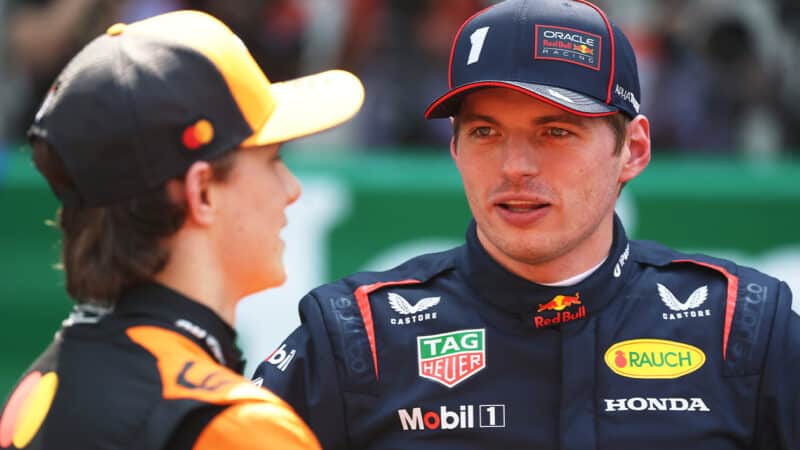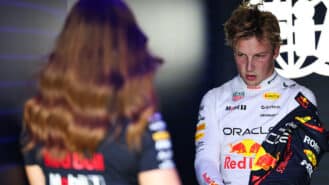Max Verstappen has backed a message that describes Red Bull as coming close “to bullying or a panic move” by dropping Liam Lawson from the team after only two grands prix in the seat.
In an Instagram post liked by Verstappen, ex-Caterham and Sauber F1 driver Giedo van der Garde accused the team of knowingly giving Lawson “two races only to crush his spirit”.
The message was also liked by current Sauber driver Nico Hülkenberg, Chinese Grand Prix winner Oscar Piastri and Alpine’s Pierre Gasly, along with former Toro Rosso F1 driver Jean-Eric Vergne.
“I’m getting a bit tired of all the comments that F1 is the toughest sport in terms of performances and when you’re underdeliver you’ve gotta face the consequences,” wrote Van der Garde. “Yes, you gotta perform. Yes, the pressure is insane. But in my opinion this comes closer to bullying or a panic move than actual high athlete achievements.
“They made a decision – fully aware – gave Liam two races only to crush his spirit. Don’t forget the dedication, hard work and success Liam has put in his career so far to achieve the level where he is now. I remember my own blood, sweat and tears – and that was to reach F1. Let alone driving for an absolute top team. Yes, he underperformed the first two races – but if anyone’s aware of that it’s himself. Perhaps he has suggested this himself, but if not I wish Liam all the strength and courage to get to the grid in Japan. Trust yourself, get your head up, prove them wrong.”
Verstappen was already reported to be dissatisfied by the situation that will see Yuki Tsunoda replace Lawson for the Japanese Grand Prix in just over a week’s time, before publicly backing Van der Garde’s post.
He had also empathised with Lawson in China, where the 23-year-old had qualified last for both the sprint race and Grand Prix, in a Red Bull RB21 car that looked difficult to drive in the extreme.
“I think if you put Liam in the Racing Bulls car, he will go faster. I really think so,” Verstappen said. “That car is easier to drive than ours. I also notice that when I talk to Liam.
“Last year, I didn’t think the difference between him and Yuki Tsunoda was that big. Otherwise the team wouldn’t make the choice to put him in at Red Bull either.”


